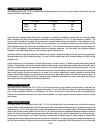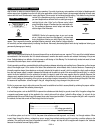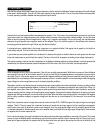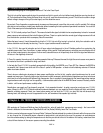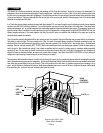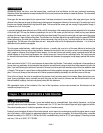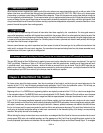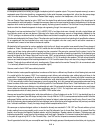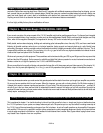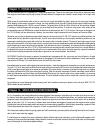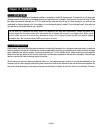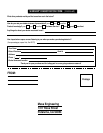
PAGE 19
the headphone potential, we initially jerry-rigged a headphone jack to the speaker outputs. This proved impressive enough, so we re-
engineered some of the internal earthing arrangements to further quiet the power amp stage which, rather than the preamp stage,
would drive the headphones. This transferred Tandem-State Imaging - access to the headphones, a first in the industry.
The new Preamp Output required an extra 12AX7 over the original three which meant additional redesign of the board-layout to
accommodate the extra tube position. To create the necessary space on the board required changing the positioning of the storage
capacitors which ended up actually increased their capacity, improving dynamic headroom. This is but one of many examples how a
hands-on rather than theoretical approach to design and engineering, though time-consuming, pays off .
Generation II was how we introduced the TIGRIS at WCES 1997 in Las Vegas: dual-mono internally, but with a single Volume and
Input Selector control and two new features. Returning to the factory with enormous amounts of congratulatory feedback for the
TIGRIS prototype, we determined that an additional feature would make this amplifier yet more versatile and attractive: the Level
Set attenuator dedicated to the Preamp Output. This attenuator would enable convenient level matching for bi-amplification schemes.
It’s an upgrade path that has frustrated many music lovers with integrated units who usually need to add active crossovers or
otherwise insert a means to level-balance the second amplifier.
We decided to build a provision for such an application right into the unit, though now another issue reared its head. Every change of
feedback or Triode / Pentode setting in the TIGRIS would alter the level balance with the second amp and require an adjustment,
making use of these tuning options while bi-amping less than convenient. We were also concerned that the output level of the
Preamp Out jacks during very low volumes might be insufficient to drive an amplifier of lowish input sensitivity. So we decided upon
sourcing the signal for the Preamp Output not from the extra 12AX7 we had previously installed for this purpose, but from the final
section, thus feeding the same signal to the second amp which the TIGRIS is sending to the speakers. This both solved drivability
concerns and made subsequent level matching between the TIGRIS and the second amp a non-issue. Any change in feedback or
Pentode / Triode activity now affects both units simultaneously. (Please note that the moniker ‘Preamp Out’ is for convenience’s sake
- it is technically different from a conventional preamplifier signal!)
However, now the fourth 12AX7 was suddenly obsolete!
We then looked at various possible applications to make use of this tube in a different way. Based on critical listening tests, we wired
it in parallel with the first preamp 12AX7, thus increasing current delivery and subtracting noise, adding body and bloom to the
presentation. This became generation III: an extra attenuator and an improved preamp section. However, one further incarnation was
to occur when repeated tests showed us that our selectable tube / solid state rectification, a feature of the first three versions of the
TIGRIS, was sonically invisible. Sonic transparency is usually a good thing, but in this case we had incorporated an advanced tuning
feature to make a distinct sonic contribution. We hold the patent for User-Selectable Silicon Diode / Tube Rectification, and in our A/
B biased guitar amps the sonic effects are very noticeable and useful. We automatically decided to incorporate such a novel feature
into our assault on affordable state-of-the-art tube amplification, aka the TIGRIS. You might have seen some of our first TIGRIS
ads and postcards which still clearly show the dual 5AR4 / GZ34 rectifier tubes.
However, we learned that selectable tube / solid state rectification in a Class A design such as the TIGRIS has decidedly less of an
impact than in high-power Class A/B design routinely driven into clip. With the TIGRIS, even experienced retailers couldn’t tell either
setting apart. Neither could we, and we had to admit that a feature for feature’s sake simply wasn’t worth having. So out it went. One
final trip to the drawing board now dealt with the last challenge: how to utilize the two outer toggle switches that previously controlled
tube / solid state rectification. Visually, the design simply looked incomplete without them.
We came upon a simple and elegant solution: to relocate the formerly rear-mounted A.C. ON / OFF and Ground switches up front,
thereby making them more accessible, and to move the Level Set attenuator from its former Rear Panel to its present Rear Bay
location, mirror-imaging the Negative Feedback selector, with the Headphone / Speaker selector in between. The design was now
finalized and production, a year since the first prototype, could finally begin. Generation IV is how we introduced the finalized TIGRIS
to the public at large during HiFi 97 in San Francisco, May / June 1997 and first shipments commenced simultaneously.
You will appreciate the fact that your new amplifier went through this lengthy process of development and evolution prior to going into
EVOLUTION OF THE TIGRIS: (Continued)



